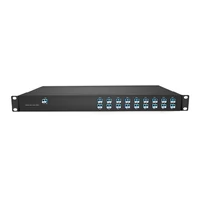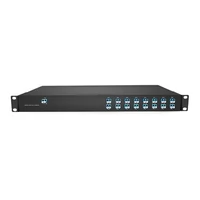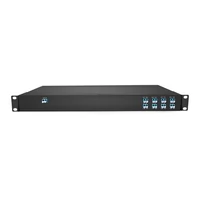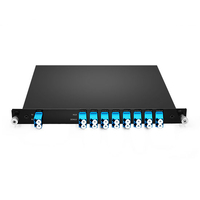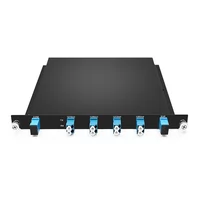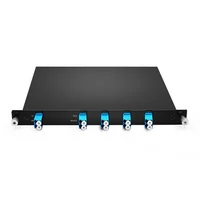In our current world, which is infused with tech, there is a greater need for faster and more valuable data transmission technologies. CWDM Mux Demux technology maintains a good structure for increasing the capacities of fiber channels without the need to construct more fibers. This technique combines several wavelengths for transmission through a single optical fiber, maximizing its ability to transmit data over different channels simultaneously. In this guide, we will look at CWDM Mux Demux, focusing on the technology itself, its operational principles, and its impact on modern telecommunication systems. As technology revolutionizes information exchange rapidly, IT specialists and engineers need to know how this technology works to improve network efficiency and scalability.
Table of Contents
ToggleWhat is CWDM Technology and How Does it Work?
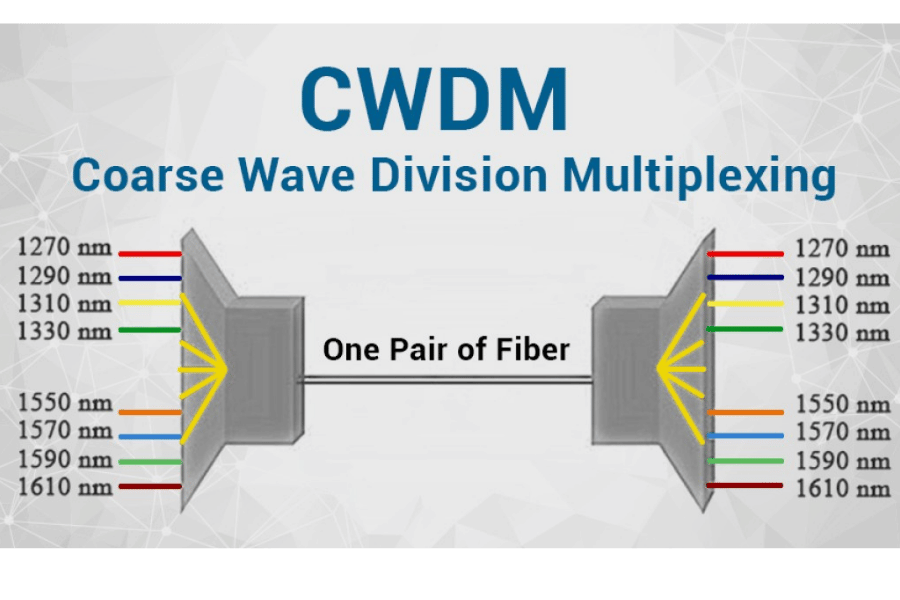
CWDM, also known as Coarse Wavelength Division Multiplexing, is a technique that increases the capacity of a single fiber optic cable. It uses different wavelength channels spaced out over a large range of 1270nm to 1610nm with 20nm channel spacing. This makes it possible to transmit several data signals through the wire simultaneously without getting in each other’s way, which helps optimize the given bandwidth. To explain it briefly, CWDM uses passive optical devices that combine several optical signals of different wavelengths to transmit through the single fiber and then demultiplex them back into their original form at the destination. The advantages of this technology include its low cost and low power consumption, and, therefore, it applies to short- to medium-reach networks, where bandwidth still needs to be high. Still, costs and reuse of existing infrastructure are more important.
Defining CWDM and Its Applications
Coarse Wavelength Division Multiplexing, or CWDM, is a technique specifically developed to improve fiber optic communication by allowing multiple data channels to be transmitted over a single optical fiber simultaneously. Interference is minimal because each channel has its unique wavelength, which is more efficient in network bandwidth with the 8-channel configuration. The high-performance cost of DWDM technologies makes CWDM more appropriate where adding more network bandwidth is required because it uses less advanced devices, which consumes less power and cuts costs. CWDM is mainly used in metropolitan area networks (MANs), local area networks (LANs) enterprises, and CATV transmission. Bandwidth-demanding services and high-rate data transfer CWDM enhance the high data transmission rate requirements and, therefore, cater to the rapid demand for bandwidth-intensive services.
How CWDM Mux Demux Functions in a Network
CWDM Mux Demux, or multiplexer and demultiplexer, is significant in a network by controlling the streams of data walking in the fiber. The multiplexer takes several optical signals with different wavelengths and throws them into one composed signal for sending through the fiber. This process achieved optimum utilization of the bandwidth of the fiber. However, on the other side, the demultiplexer brings the composed signal into its components and then routes the components to the specific channels. The entire process is passive, using optical elements that do not need power from outside – efficiency, which reduces the energy costs and operational expenses overall. This efficiency implies that CWDM Mux Demux is most suitable for networks in which economic efficiency is paramount since data integrity and speeds are never compromised.
Comparing CWDM with Other WDM Technologies
There are some notable differences when CWDM is compared with other Wavelength Division Multiplexing (WDM) technologies, especially Dense Wavelength Division Multiplexing (DWDM). With CWDM, there is a broader channel spacing and a limited number of wavelengths – usually, only 18 stripes crossing 20 nm apart, which makes it easier and cheaper to deploy using simpler components. This simplicity leads to lower power consumption and operational costs. On the other hand, DWDM may accommodate hundreds of channels with a narrow spacing of less than 1 nm between them which will allow for more excellent data transfer over longer distances but may require more complex and expensive facilities like temperature control to prevent signal distortion. WDMP is then more advantageous for long-range and large-capacity applications. In contrast, CWDM is the right alternative for metropolitan and access networks where costs and efficiency are considered more important.
Specifications of CWDM Mux Demux
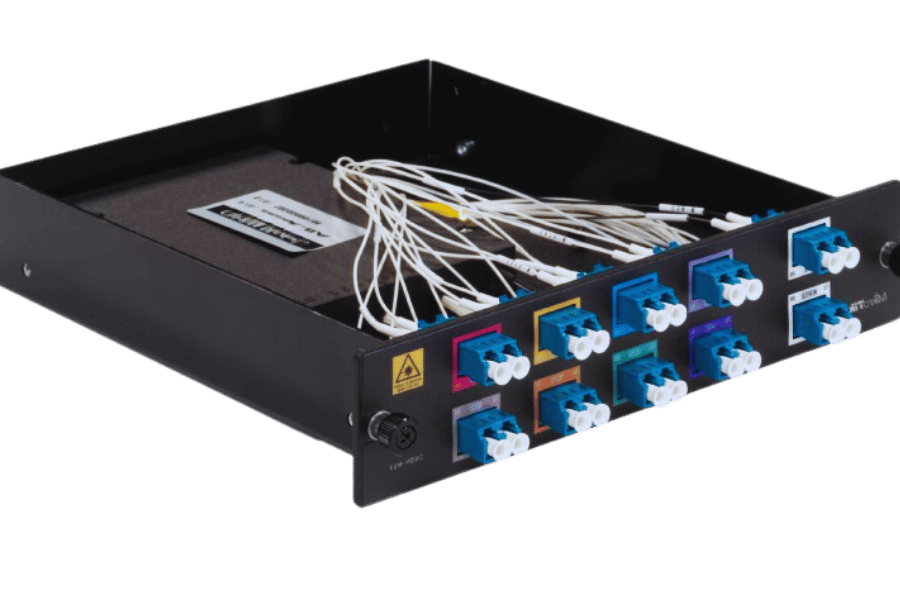
Understanding the Key Specifications
The CWDM Mux Demux’s key features are determinative when deciding on the applicative feasibility of the device within a certain network architecture. This specification includes the common parameters and the average number of channels, the level of the insertion loss, return loss, channel separation, and the temperature range of operations. The devices that integrate CWDM Mux Demux into the networks are generally rated to incorporate eighteen channels with a 20nm separation as the standard. In this configuration, the interference is minimal, and deployment cost is kept within reasonable limits. In considering the device design, insertion loss, which describes the amount of signal power lost as it passes the device, is one of the key parameters, and it normally ranges from 2 to 5 dB. The return loss, which measures the percentage of the reflected signal, should be less than the maximum and normally exceeds 45 dB. The structure of the CWDM component also dictates the working environment, with most components capable of working between -40 degrees Celsius and +85 degrees Celsius, allowing the devices to be deployed in various environments. These specifications armed the network designers with the assessment of performance characteristics and the integration of Mux Demux to a certain network according to its specifications.
Exploring the Importance of Wavelengths
It is vital to comprehend the importance of particular wavelengths while opting for the CWDM technology to maintain the efficiency levels of the network. Wavelengths like 1310nm are very important in my research as they guarantee effective multiplexing and demultiplexing of signals in fiber optic systems. CWDM uses a 20nm channel spacing, which allows cheap optical components to be used while reducing interference compared with other technologies. Properly using these wavelengths guarantees distortion-free and clean signals such that high-quality data continues getting transmitted. Furthermore, using appropriate wavelengths also improves the scalability and flexibility of the networks, especially in metropolitan and access networks with diverse traffic requirements, allowing them to utilize the resources efficiently. The appropriate wavelengths used in this case serve numerous requirements, including the increased bandwidth required while achieving the cost and performance targets in the network design.
Analyzing Insertion Loss in CWDM Systems
Insertion loss is a significant risk in CWDM Systems, severely affecting optical networks. From my analysis of the most relevant resources, I learned that insertion loss is the loss of the strength of the signal due to its circulation through CWDM components like Mux Demux modules, connecting links, and splicing. It is usually expressed in decibels (dB); negative dB numbers mean better performance. The main elements contributing to insertion loss imperfection are connector imperfections and fiber optic cable loss. Their considerable power consequences can be removed by accurately measuring and managing insertion loss to achieve proper signal transmission. High input power leads to high signal quality and low errors in signal transmission performance. The performance of the network designer is dependent on the minimization of the insertion loss to boost the efficiency of the CWDM network.
How to Install a CWDM Mux Demux?
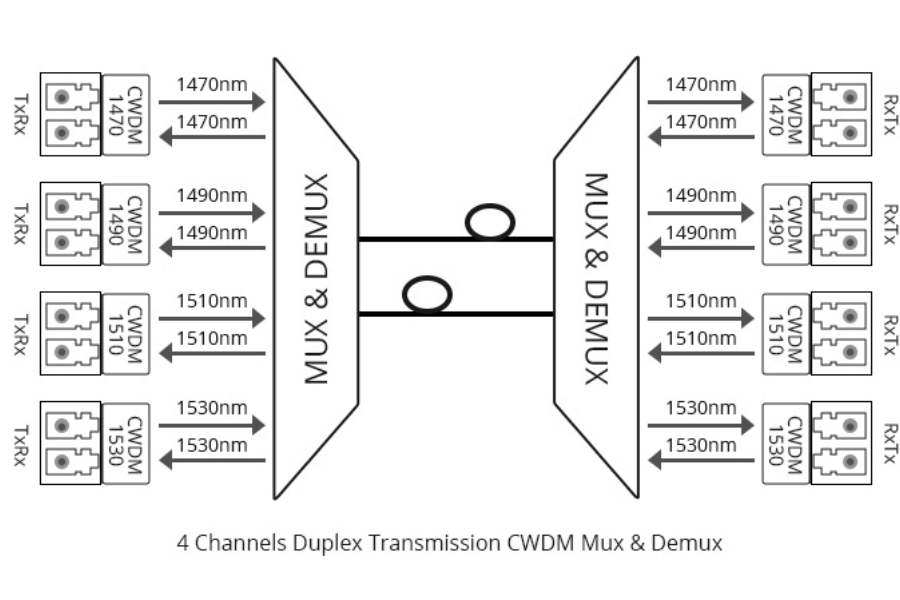
Preparing Your Fiber Infrastructure
To prepare the fiber infrastructure for the installation of the CWDM Mux Demux, I first analyze the existing network topology and look for places where the new parts can be integrated. It is also essential to ensure that the CWDM equipment will work with the existing fiber optic cable; therefore, I check what fiber types and connectors are used. Tools and equipment such as fiber optic cleaning kits, splicing tools, and power meters are collected to make the installation as smooth as possible. In the same way, I look for specific wavelengths and bandwidth capacity required so that the growth of the network is not at a higher cost than is necessary. Last but not least, from such practices, I learn how best to perform the whole installation, without great insertion loss and the signal intact.
Step-by-Step Installation Guide
- Evaluate Network Configuration: Evaluate and diagram the existing network topology as well as identify possible locations for interconnection.
- Check Compatibility: Identify the types of fibers (single mode/multi-mode) and the standards (LC, SC, etc.) of the connectors in the network system.
- Procure Required Implementations: Obtain required implements such as kerato clean fiber kit, splicing knife, and optical power meter.
- Establish Required Wavelengths Identify the necessary CWDM wavelengths, such as 1310nm, and verify that they conform to the network’s bandwidth needs.
- Stick to Recommended Practices: Refer to standard practices that aim at minimizing the parameter known as insertion loss while aiming to maintain quality of signal transmitted.
- Place Mux Demux Unit: Make sure Mux Demux unit is mounted in a stable position on the cabinets or racks within the network.
- Attach Fiber Optic Cables: With the correct connectors in place and after the fiber optic cables have been pre-cleaned, plug the corresponding ports.
- Conduct Test Procedures: Assess the performance of the system by measuring the performance of the input output signals using power meters.
- Maximize the Signals: Implement some changes that are deemed appropriate in order to improve signals.
- Write the Installation Report: Provide a comprehensive account of the installation, including the steps taken, the specifications of components, and their test outcomes, particularly those related to the extension interface.
Troubleshooting Common Installation Issues
If a Mux Demux unit installation is faced with problems, use the following troubleshooting tips to resolve common problems during installation efficiently.
- Signal Loss: If an excessive insertion loss is observed, inspect all fiber optic connections and ensure that they are free from dirt and well secured. Dirty connectors are a very expensive source of transmission quality.
- Compatibility Mismatches: Always ensure that the types of connectors and fiber modes comply with the requirements of the network equipment. If the moderating components are incompatible, they may fail to connect completely and cause poor performance when using different CWDM channels.
- Improper Wavelength Alignment: One should check to ensure that the CWDM wavelengths used are well fixed on the channels they are meant to work on. Not Planned wavelengths can cause poor quality signals, rendering communication channels useless.
- Network Interference: In the premises, search for interference sources of signal disturbance. The devices may operate close to the network transmitters in the EMI range.
- Power Level Discrepancies: Measure the valid power levels using an optical power meter to check if the channels’ power levels are within expected values. Reduce the gain on the amplifier components or increase these resolution levels in case these parameters are out of limit values so as to effectively use the channels of CWDM.
Focusing on these areas of difficulty can help solve most of the installation problems while improving the functions of the Mux Demux system.
What are the Related Products for CWDM Systems?
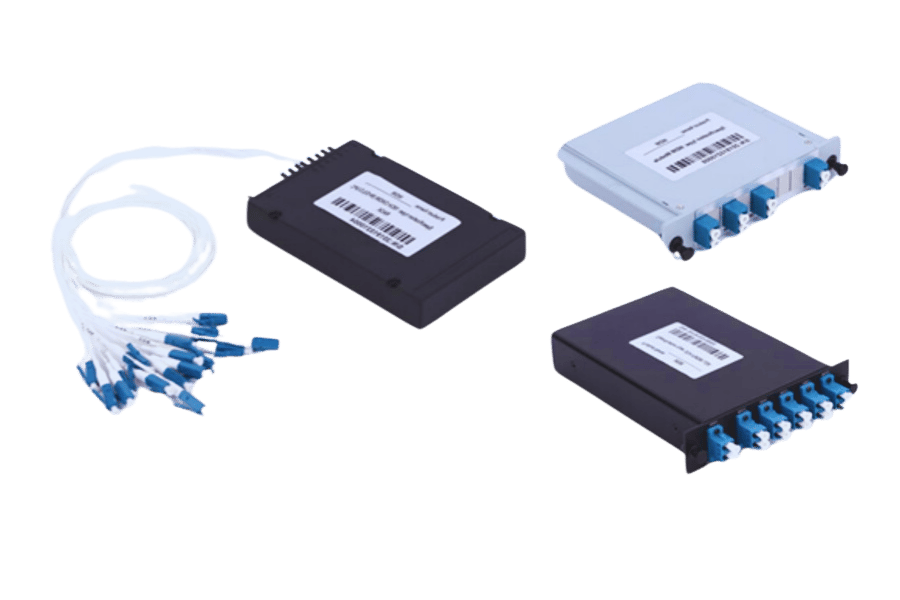
Exploring Compatible Transceivers and Modules
The compatible transceivers and modules find great significance in the working of the CWDM systems. In selecting such components, it is necessary to observe if they support the specific wavelengths employed in your network, including the topmost CWDM channels. Key products are these CWDM SFP (Small Form-factor Pluggable) transceivers that allow mesh connection of several wavelengths through a single fiber optic link. These transceivers are available in a broad number of wavelengths and usually in the entire range of CWDM from 1270 nm to 1610 nm.
At the same time, OADM (Optical add-drop multiplexer) modules are essential as they allow the control of channel wavelengths in many network nodes, facilitate channel deployment, and do not affect current traffic. Implementing these transceivers and modules about the structure of your network would result in enhanced performance with indiscriminate scalability from a data center to telecommunication networks.
Understanding the Role of Fiber Patch Cables
Fiber patch cables, sometimes called optical fiber patch cords or jumpers, belong to CWDM systems and their components. Their purpose is to connect the optical transceivers to other devices within the network to convey the data effectively. In terms of performance, these cables are made to meet strict quality standards about ion attenuation, low insertion loss, and few connectors. To suit particular applications, they come in many varieties, including single-mode and multimode types. Choosing and managing fiber patch cables appropriately helps reduce signal loss and enhances the entire network’s performance, which is required for an efficient and robust Optical communication system.
Additional Accessories for Enhanced Performance
In the area of CWDM networks, some accessories increase the performance and dependability of optical networks. These are special attenuators and wavelength division multiplexers (WDM), which allow for optimizing the signal and handling several wavelengths in a single fiber, respectively. In addition, optical splitters significantly split a fiber optic signal into several outputs, thereby improving traffic distribution across the network and increasing the existing fibers’ usable capacity. Such integration helps improve the signal quality and increase the system’s net throughput and capacity, especially for the higher CWDM channels. It is important to stress that the appropriate accessories, depending on the actual network characteristics and scalability requirements, have to support all further performance growth in telecommunications and data centers.
Benefits of Using CWDM Mux Demux in Fiber Networks
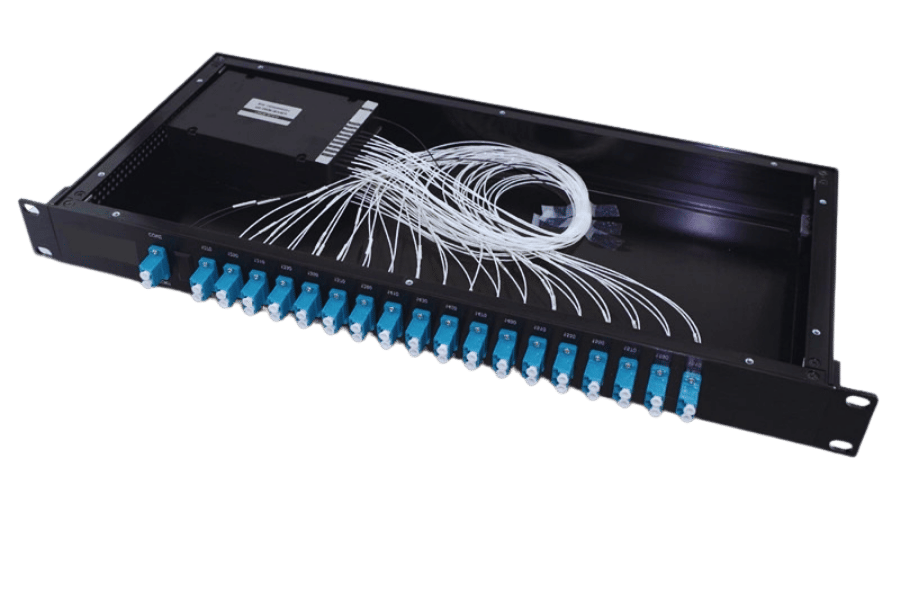
Increasing the Capacity of Existing Fiber Infrastructure
Integrating Coarse Wavelength Division Multiplexing (CWDM) Mux Demux devices within the already-built fiber infrastructure improves the capacity of the existing network without necessarily constructing additional fiber. CWDM uses a range of wavelengths to facilitate the simultaneous transmission of several data streams over one single-mode fiber pair. This method makes the best use of the already existing fiber assets which lowers the costs and the intricacies of expanding the network. In addition, further savings can be realized from operating expenses since CWDM systems do not require advanced forms of temperature control. For these reasons, CWDM is an ideal and cost-effective means of increasing the bandwidth of the existent optoelectronic networks to match the growing data requirements of the current information age.
Cost-Effectiveness Compared to Other Solutions
CWDM Mux Demux devices are a more economical option than the more advanced Dense Wavelength Division Multiplexing (DWDM) systems and the conventional method of adding another fiber. While DWDM systems are notorious for their costly, high-performance gear and chilling systems to control tight channel spacing, CWDM works in wider channel spacing with much lesser temperature control requirements, thus lowering operational costs. Moreover, introducing new fiber optic cables incurs additional high investment and logistical costs, such as the acquisition of licenses and labor, and can cause interruptions of services. On the other hand, CWDM technology uses the current facilities and does not increase installation costs. This makes CWDM a wonderful technology for companies that want to improve their network capacity but would rather not incur the high costs involved in other approaches.
Scalability and Future-Proofing Your Network
Regarding network evolution and future expansion, CWDM technology stands out helpfully. Due to its embedded nature in CWDM, significant changes to the existing infrastructure are not always required, and new channels can be added as needed. Such flexibility helps meet future bandwidth requirements easily, allowing for the expansion of data flows in the future. Furthermore, the CWDM technology enables a smooth transition from the current to the new technology, allowing the network to be competitive in the face of new data transmission technologies. Hence, CWDM channels solve the connectivity problems that exist now and prime the networks for future innovations and movement expansion.
Reference Sources
Wavelength-division multiplexing
Frequently Asked Questions (FAQs)
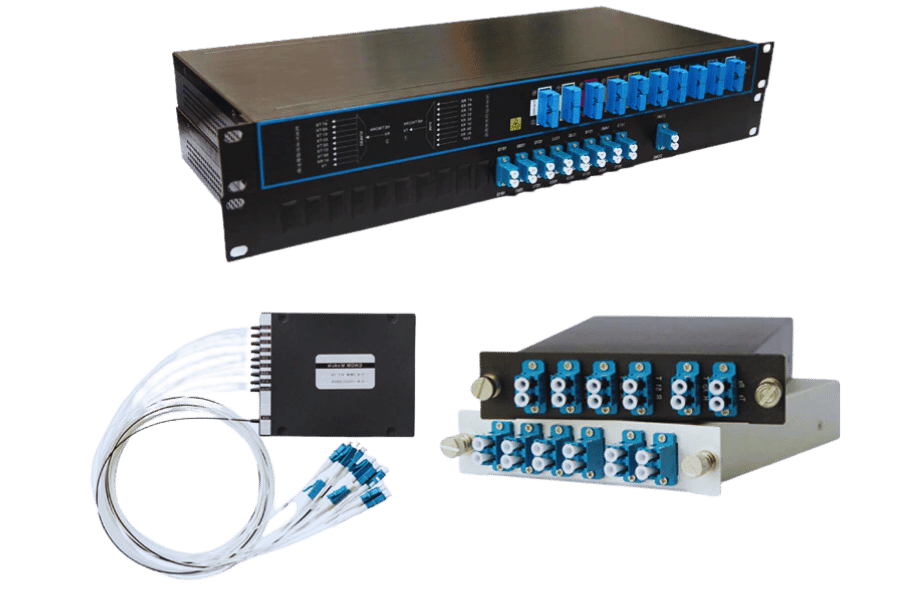
Q: What is a CWDM Mux Demux? Can you explain its working principle?
A: A CWDM (Coarse Wavelength Division Multiplexing) Mux Demux is an elementary optical component that integrates (multiplexes) or splits (demultiplexes) several light wavelengths within a single optical fiber line. This helps raise the capacity of the already existing fiber infrastructure by allowing multiple data channels to be put through a single fiber optic cable at the same time.
Q: How many channels does a typical CWDM multiplexer feature?
A: The most common configuration is an 8-channel CWDM multiplexer. These 8ch CWDM systems allow various wavelengths of eight from 1470 nm to 1610 nm to be used, allowing for a massive increase in the capacity of the fiber channel.
Q: Tell us what distinguishes single fiber from dual fiber CWDM systems.
A: In single-fiber CWDM systems, one fiber strand is used for both data sending and receiving but uses different wavelengths for transmission and reception. A dual-fiber system, on the other hand, will use two different fibers—one for transmitting and one for receiving. Single-fiber systems may only be suitable for a few applications but can conserve more fiber.
Q: What do you mean by the monitor ports provided in a CWDM Mux Demux?
A: The monitor port, also named MON, is an extra port that some CWDM Mux Demux devices have. It allows monitoring of the optical signal without affecting the data. This port is useful for diagnostics, performance, or connecting test instruments so that the main data traffic is not interrupted.
Q: What type of devices are CWDM Mux Demux: passive or active?
A: Such devices do not need power for performance and are, therefore, referred to as passive devices. Since no power is needed to combine or separate wavelengths, passive economy reliable offers of CWDM Mux Demux systems using optical filters are applicable for a wide scope of nonelectrical-powered applications.
Q: Which kind of connectors are used with CWDM Mux Demux devices?
A: CWDM Mux Demux devices typically use LC (Lucent Connector) connectors, which are widely used in fiber optic networks. Depending on the device and application, other types, such as SC or FC, may also be offered.
Q: Are CWDM Mux Demux systems compatible with previously existing Network equipment?
A: Yes, CWDM Mux Demux systems can work in conjunction with existing switches and routers and SFP (Small Form-factor Pluggable) transceivers. They can also be easily implemented into current Fiber networks to expand capacity without the need for complete infrastructure changes.
Q: How are CWDM Mux Demux devices typically mounted on or installed?
A: CWDM Mux Demux devices are usually rack-mounted in standard 19-inch network equipment racks. Some manufacturers, including SmartOptics, provide suitable installation requirements and flexible mounting to meet various needs.
Q: Which factors should justify delving into more CWDM Mux Demux?
A: CWDM Mux Demux is one of the best options for fiber channel expansion. Its capacity increase and bandwidth efficiency save the money that would have otherwise been spent installing more fibers, supporting Ethernet/fiber channels (most protocols) easily and allowing more than one service to be conveyed on a pair of fibers.
Related Products:
-
 Passive CWDM Double Fiber Mux & Demux Module 18 CH (1270-1610nm) LC/UPC 1U Rack
$630.00
Passive CWDM Double Fiber Mux & Demux Module 18 CH (1270-1610nm) LC/UPC 1U Rack
$630.00
-
 Passive CWDM Double Fiber Mux & Demux Module 16 CH (1310-1610nm) 1U Rack
$570.00
Passive CWDM Double Fiber Mux & Demux Module 16 CH (1310-1610nm) 1U Rack
$570.00
-
 CWDM MUX 8CH 16 Wavelengths (TX: 1310/1330/1390/1410/1470/1490/1550/1570nm RX: 1350/1370/1430/1450/1510/1530/1590/1610nm) LC/UPC Single Fiber 1U Rack
$320.00
CWDM MUX 8CH 16 Wavelengths (TX: 1310/1330/1390/1410/1470/1490/1550/1570nm RX: 1350/1370/1430/1450/1510/1530/1590/1610nm) LC/UPC Single Fiber 1U Rack
$320.00
-
 Passive CWDM Double Fiber Mux & Demux Module 8CH (1470-1610nm) LC/UPC LGX BOX
$280.00
Passive CWDM Double Fiber Mux & Demux Module 8CH (1470-1610nm) LC/UPC LGX BOX
$280.00
-
 CWDM MUX 4CH 8 Wavelengths (TX: 1470/1490/1510/1530nm RX: 1550/1570/1590/1610nm) with Express Port LC/UPC Single Fiber LGX BOX
$150.00
CWDM MUX 4CH 8 Wavelengths (TX: 1470/1490/1510/1530nm RX: 1550/1570/1590/1610nm) with Express Port LC/UPC Single Fiber LGX BOX
$150.00
-
 Passive CWDM Double Fiber Mux & Demux Module 4 CH (1470-1530nm) LC/UPC LGX BOX
$150.00
Passive CWDM Double Fiber Mux & Demux Module 4 CH (1470-1530nm) LC/UPC LGX BOX
$150.00

